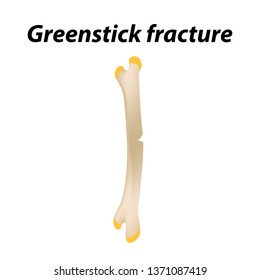The Relationship Between Posture And Pain In The Back: Methods For Maintaining Appropriate Alignment Throughout The Day
The Relationship Between Posture And Pain In The Back: Methods For Maintaining Appropriate Alignment Throughout The Day
Blog Article
Short Article Created By-Salisbury Patton
Keeping correct position isn't practically staying up straight; it has to do with aligning your body in such a way that sustains your spinal column and reduces the danger of back pain. The way you rest, stand, and move throughout the day can substantially affect your spine health. Yet how precisely can chiropractor near me ensure excellent alignment constantly, also during active days full of different tasks? Let's delve deeper right into the refined yet impactful adjustments you can make to your daily routine to maintain your back delighted and healthy and balanced.
Relevance of Proper Stance
Proper stance is essential in keeping a healthy and balanced back and protecting against discomfort. When you sit or stand with great pose, your spinal column remains in positioning, decreasing pressure on your muscular tissues, tendons, and joints. This alignment permits the body to disperse weight uniformly, preventing excessive anxiety on specific locations that can lead to discomfort and discomfort. By keeping your back effectively aligned, you can also enhance your breathing and food digestion, as slouching can compress organs and restrict their capability.
In addition, maintaining good position can boost your general look and confidence. When you stand tall with your shoulders back and head held high, you show confidence and appear even more approachable. Good position can likewise make you really feel extra stimulated and alert, as it promotes proper blood flow and enables your muscles to work efficiently.
Incorporating proper stance into your everyday routine, whether resting at a workdesk, walking, or working out, is necessary for stopping pain in the back and advertising total wellness. Keep in mind, a little change in exactly how you hold on your own can make a substantial difference in exactly how you feel and work throughout the day.
Common Postural Mistakes
When it involves preserving excellent pose, many people unknowingly make usual blunders that can add to neck and back pain and discomfort. One of one of the most prevalent errors is slumping over or stooping over while sitting or standing. This position puts excessive pressure on the spine and can lead to muscle discrepancies and discomfort in the long run.
An additional usual mistake is overarching the reduced back, which can flatten the all-natural curve of the spine and cause discomfort. Furthermore, going across legs while sitting may really feel comfortable, however it can create an imbalance in the hips and pelvis, causing postural concerns.
Using https://doctor-after-auto-acciden51627.madmouseblog.com/11134600/browse-the-world-of-cushion-alternatives-for-neck-discomfort-relief-with-professional-insights-and-ideas-figure-out-just-how-to-make-your-nights-much-more-restful that's as well soft or also solid while sleeping can also impact your placement and add to pain in the back. Last but not least, frequently craning your neck to look at displays or adjusting your setting frequently can strain the neck and shoulders. Being https://kameronxvqkf.bligblogging.com/31229277/exploring-the-link-in-between-chiropractic-care-care-and-athletic-efficiency of these common postural errors can assist you maintain far better alignment and lower the danger of back pain.
Tips for Correcting Alignment
To improve your alignment and lower back pain, it's necessary to focus on making small modifications throughout your daily routine. Begin by bearing in mind your pose. When resting, ensure your feet are level on the flooring, your back is straight, and your shoulders are relaxed. mid lower back pain slouching or leaning to one side. Usage ergonomic chairs or cushions to support your reduced back.
When standing, disperse your weight uniformly on both feet, maintain your knees somewhat bent, and tuck in your hips. Involve your core muscle mass to sustain your spinal column. Take breaks to stretch and walk if you have a sedentary task. Incorporate exercises that reinforce your core and back muscular tissues, such as slabs or bridges.
While sleeping, make use of a cushion that supports the natural contour of your neck to maintain proper back placement. Avoid sleeping on your tummy, as it can stress your neck and back. By being mindful of these pointers and making small modifications, you can progressively fix your positioning and alleviate pain in the back.
Conclusion
Bear in mind, preserving good posture is essential to avoid pain in the back and advertising back health and wellness. By being mindful of your alignment, distributing weight evenly, and engaging your core muscle mass, you can reduce pressure on your back and decrease the risk of pain and injury. Incorporate ergonomic assistance, take regular breaks to extend, and strengthen your core and back muscle mass to preserve appropriate positioning throughout the day. Your back will thank you for it!
